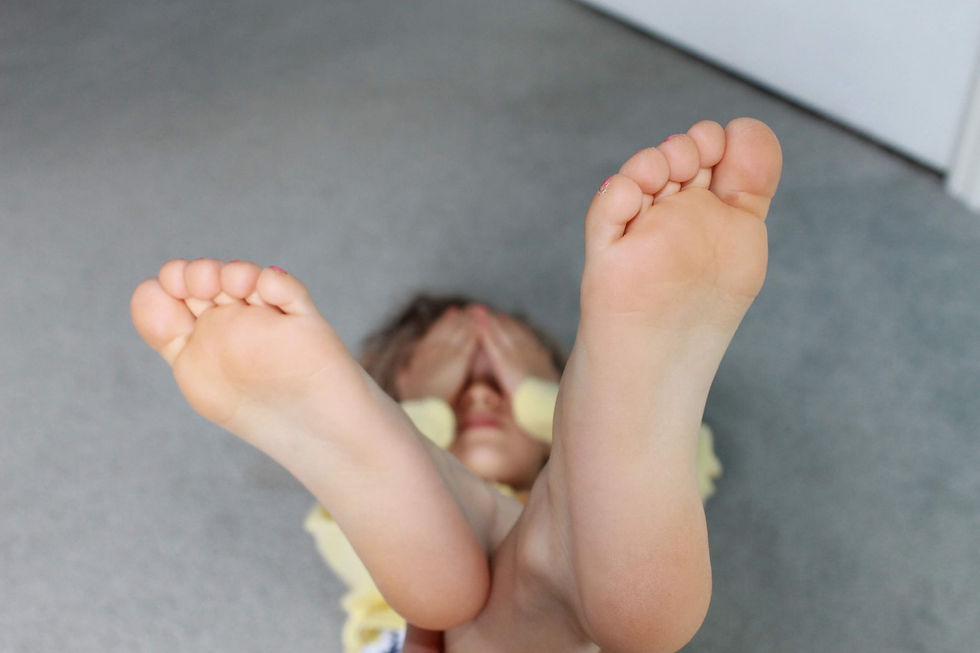Foot and Ankle Pain: An Overview
- Sep 6, 2021
- 3 min read
Updated: Nov 4, 2021

The foot and ankle provide support for our body weight and when pain begins in these areas it can greatly reduce our mobility and quality of life. The pain can be minor and temporary. However, when pain persists and becomes more intense - it can be due to more severe complications.
The primary symptoms include:
· Swelling
· Bruising
· Stiffness
· Tenderness
When we look to treat pain in our foot and/or ankle - we first want to identify whether the injuries are chronic or acute. So, what is the difference?
Acute Injury
An acute injury is the damage caused by one event for example; a sports injury.
Chronic Injury
Whereas a chronic injury is not caused by one isolated event but instead by the continuous overuse and motion of the injured foot.
Foot and or ankle pain is extremely common, especially so in middle or older aged people with 1 in 5 estimated to suffer from this ailment. Often minor injuries to the foot or ankle can heal over time with the help of simple remedies such as icing, rest and compression.
However, if the injury does not heal and the pain actually worsens this may be due to a more serious condition. Let’s take a look at some of the most common conditions that could be causing your pain.

Plantar fasciitis:
Heel pain is most commonly caused by Plantar fasciitis. At the bottom of your feet, there is a thick band of tissues (Planter fascia). This band connects your heel to your toes. Inflammation of this band is known as Plantar fasciitis. It causes a severe stabbing pain in the heel, especially when you take your first steps in the morning. During the day, the pain reduces but can come back due to long periods of standing or walking after sitting for an extended period of time.
We tend to see this condition arise among runners, people who wear the wrong size shoes and people who are overweight. Chronic Plantar fasciitis can eventually lead to other complications. For example, changing your posture while walking to avoid the pain can result in hip, back and knee problems.

Achilles tendinitis:
This is an injury to the Achilles tendon, which is the name given to the band of tissues that connect your heel to your calf muscles. This is often the result of overuse and is a common injury among runners who may have suddenly increased the intensity or length of their runs.
In most cases this injury is not too serious and can be treated with home remedies such as icing and resting. However, in more severe cases for example, if the tendon ruptures, surgery will be needed to repair the tissue.
Fracture:
A broken bone can result from many different circumstances and results in pain that intensifies with the movement of the affected area or when pressure is applied. There are two types of fractures that can occur:
First there is compound fracture which is the complete breakage of the bone this is often the result of an accident.
Secondly there is stress fractures which are hairline cracks in bones caused by stress and repetitive activity.
Bones require time and rest to heal. Pairing this with a physiotherapy treatment plan can help you to get back on your feet and rebuild the flexibility and mobility you had prior to the accident.

Arthritis:
Arthritis is the general term for over 100 different types of arthritis which can cause pain in joints. It is a type of degenerative joint condition. Arthritis can cause you to lose the smooth “cushioning” cartilage that protects your joints as you move throughout the world. Over time this wear and tear can result in your bones rubbing against each other causing a lot of discomfort – and eventually the joint may not work in the way that it should.
There are several types of arthritis that can cause foot and ankle pain including:
· Osteoarthritis
· Rheumatoid arthritis
· Gout
· Psoriatic arthritis
· Post-traumatic arthritis
As this is a degenerative condition, it is important to seek treatment as early as possible. A good treatment plan can help you to reduce your symptoms and greatly improve your quality of life.
Bursitis is a condition caused by the swelling of a small fluid filled sac called a bursa. These sacs act to cushion areas where bones would otherwise be rubbing directly on muscles, tendons or skin.
These pockets of fluid can begin to swell due to injury or the overuse of joints like the ball of your foot, big toe, heel or ankle. When these pockets swell it usually appears as a red swollen lump which is painful and can cause a lot of discomfort when walking.
If you are experiencing chronic foot or ankle pain or undiagnosed foot or ankle pain use our website to book an appointment now.









Comments